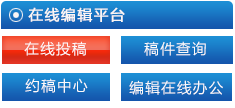中医中药
呼叫铃联合输液多组登记表在急诊输液室应用与效果评价
王慧1 郭慧芳2 林冬梅1* 李玖明3 徐国君2 周玲1
【摘要】 【摘要】目的 评价呼叫铃联合输液多组登记表在急诊输液室的应用效果。方法 2019年4月便利抽样法选取大连医科大学附属第一医院急诊输液室患者303例为研究对象,按照计算机数字随机分为改良组和对照组,各观察1周。改良组采用在输液椅扶手上安装一键式呼叫铃再联合输液多组登记表的方法共163例患者,对照组采用患者自主呼喊护士的传统方法共140例患者,
【关键字】 设备设计,呼叫铃,登记表,输注
中图分类号:文献标识码:文章编号:
[Abstract]Objective To evaluate the application effect of infusion chair call bell combined with multi group registration form in emergency infusion room. Methods In April 2019, 303 patients in the emergency infusion room of the first affiliated hospital of Dalian medical university were randomly divided into the improved group and the control group according to computer numbers and observed for one week each. In the improved group, a total of 163 patients were installed on the armrest of the infusion chair call bell and then combined with the registration form of multiple infusion groups, while in the control group, a total of 140 patients were selected by the traditional method of patients calling for nurses. To compare two groups of patients the total satisfaction of nurses and nurse for batch a transfusion patients replacing infusion bag round trips, time-consuming, and the nurse human economic costs. In 2019 and 2017, due to the delayed response of nurses the long-term nursing service effect is not satisfied .Results Compared with the observation group, the total satisfaction of patients in the improvement group, the round-trip times and time per change of infusion bag, and the labor and economic cost of nurses were respectively [95.4%(156/163)VS 87.8%(123/140), χ2=40.40, P=0.000], [(2±1)times VS (3±1)times, Z=7.598, P=0.000], [(7.32±1.69)s VS (39.85±10.93)s, t=23.492, P=0.000], [(135.52±0.51)yuan VS (247±2.36)yuan, t=347.721, P=0.000],the difference between the two groups was statistically significant (P<0.05).Due to the delayed response of nurses, there were unsatisfactory service conditions, such as the delayed needle-pulling and excessive blood returning, the delayed infusion and pain caused by leakage of infusion, the re-puncture caused by wrong needle pulling, the anxiety of patients caused by the blocked pipeline, and the panic caused by the empty liquid bag, respectively[0.03%(12/46137)VS 0.16%(53/33101), χ2=42.211,P=0.000]; [0.01%(6/46137)VS 0.13%(44/33101), χ2=42.889, P=0.000]; [0.00%(2/46137)VS 0.04%(12/33101), χ2=11.110, P=0.001]; [0.02%(8/46137)VS 0.08%(25/33101), χ2=15.660, P=0.000]; [0.03%(12/46137)VS 0.09%(30/33101), χ2=15.175, P=0.000], the difference between the two groups was statistically significant (P<0.05). Conclusion The method of call bell combined with multi group registration form of infusion can ensure the safety of patients' intravenous infusion and improve the total satisfaction rate of patients to nursing service. Optimize the work flow of nurses, improve the work efficiency of nurses, reduce the intensity of nurses' work and save labor and economic cost.
急诊输液室是反映急诊护理工作的一个重要窗口,患者的就医感受直接影响医院的声誉,随着医学的发展与社会的进步,患者对于护理质量和治疗安全等方面提出更高的要求[1],如果处理不好患者的迫切需求很容易会引起护患纠纷。尤其是在急诊输液室的输液高峰时段和突发批量应急输液时,护士工作负荷加重。由于输液诊室常常人满为患,环境嘈杂,护士需不断接诊行静脉输液操作,还要频繁巡视来回折返取药、配置、换液、拔针,同时处理患者的各种需求应答,短时间内要完成大量的治疗和护理工作,单凭科室力量即使采用柔性管理以及护士的弹性排班,人力资源还是略显不足[2],甚至需要护理部临时调动人力资源才能解决急需。但往往难免因护士不能在第一时间应答患者需求导致拔针延迟使静脉回血过长、输液渗漏致疼痛延时、误拔针致重新穿刺、管路不通致焦虑、药液袋滴空致恐慌等服务不满状况。目前虽然国内有少数医院输液室安装了呼叫铃[1,3-4],但仅凭单一模式还是存在一些弊端,若配备高端的呼叫移动系统,投资成本又太高。基于以上原因,我院急诊输液室在输液椅扶手上安装一键式呼叫铃,再联合输液多组登记表的改良方法,以提高患者静脉输液服务质量的满意度和护士工作效率,降低护士工作强度和节省人力经济成本,经临床实践2年多后,效果显著,报道如下。
1 资料与方法
1.1 一般资料:大连医科大学附属第一医院是三级甲等医院,金普院区急诊输液室共有30个输液椅位和3个平车位,参与研究共有7名在岗护士,年龄25~50(39.3±9.3)岁;工作年限11~32(20.12±10.62)年;主任护师1名;主管护师5名,护师1名。根据中联医院信息系统统计2019年的年输液量为46137人次,其中更换第二瓶起输液袋共20506袋。2019年4月便利抽样法选取急诊输液室患者303例为研究对象。按计算机数字随机分组法分为实验组和对照组,各观察1周时间。实验组:2019年4月1日-7日(第一周),采用输液椅扶手上安装一键式呼叫铃联合“输液多组登记表”的护理方法共163例患者;对照组:2019年4月15日-22日(第三周),采用传统方法患者自主呼喊护士的护理方法共140例患者。纳入标准:①每天8:00~12:00为观察时间。②具有2组以上输液袋且连续输液1~7 d的输液患者。③年龄:≥18周岁的成年患者。④知情同意的患者。排除标准:①不同意参与调研的患者。②连续输液大于7天以上的输液患者。③仅有1组输液袋的输液患者。两组患者年龄、性别、诊断等一般情况比较,差异均无统计学意义(均P>0.05)),具有可比性,见表1。










